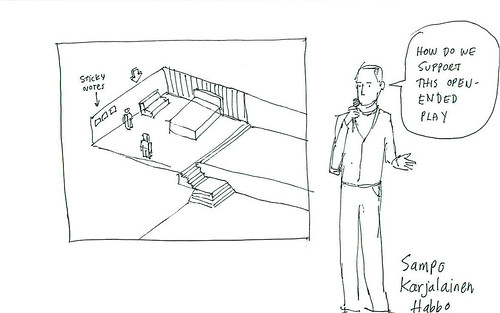Working on a presentation about user-generated content and video-games, I found interesting how Jef's talk addressed the different levels of granularity when thinking about "open design". Depending on the interactivity given to the end-user, this white paper from Think Studio discriminates:
"- Passive consumption: The user is getting products or services with no real interaction and no real choice. He or she has to take whatever is available. - Self Service: The user is given the ability to choose between various products or services. - DIY: Do It Yourself: The user starts getting involved in the value chain. - Co-design: The user starts adding value by customizing the product and therefore defining his or her needs himself (as opposed to buying a product defined by the product management team). - Co-creation: The user is involved in the design of the product or service itself."
Why do I blog this? Player-generated content is an interesting issue for the video-game industry. Although I could not make it to the GDC, Amy Jo Kim's slides are quite revealing for that matter.
What the categories above show is that there is a different granularity of participation that could be turned into game mechanics. It would be good to discriminate them in a more comprehensive or applicable way.
On a different note, I am quite skeptical of the "content" term in "user generated content" because it implies that what is created by people is strictly content, which is wrong. Imagine that people can also produce rules, algorithms, problems. For example, designing a Counterstrike level is not just a matter of producing content, it's also creating a problem that people will be engaged in, with specific constraints (okay my example is maybe wrong because in this case the problem created is a by-product of the level designed).

The picture is taken from Dave Gray's drawings made at LIFT07, it shows Sampo Karjalainen from Sulake (Habbo Hotel) who was talking about this topic.